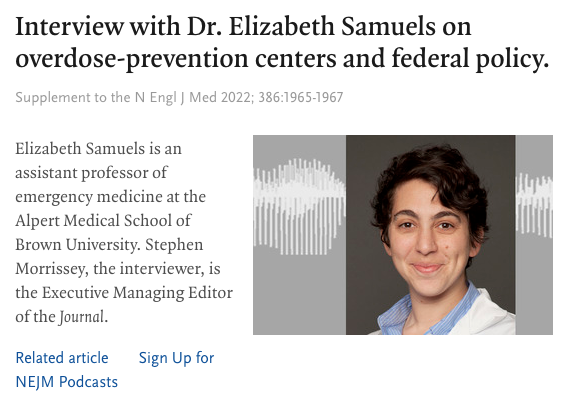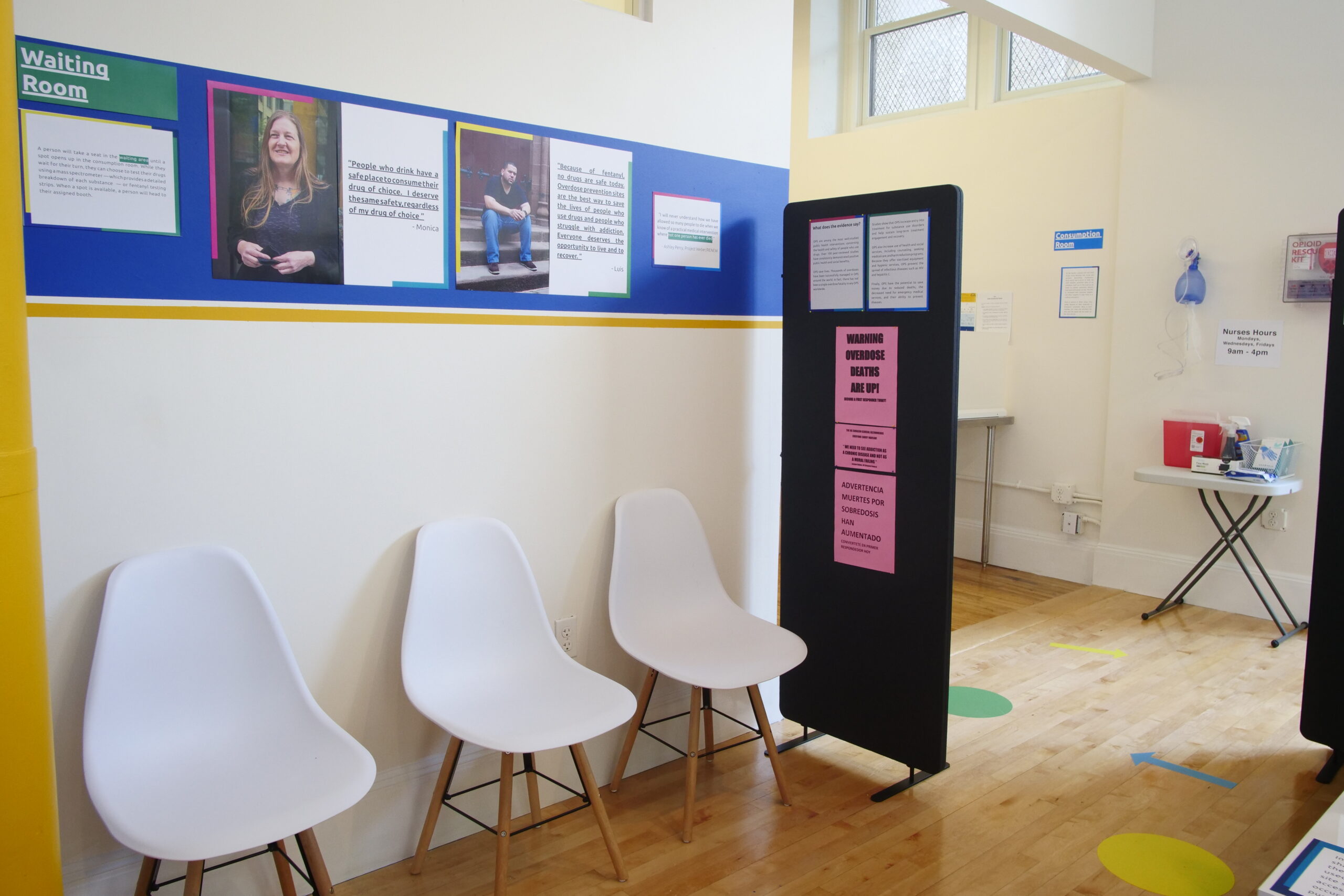Overdose prevention centers (also called harm reduction centers, overdose prevention sites or supervised consumption sites) are places where people can go to use drugs safely. They stop overdose deaths.
In 2021, 435 Rhode Islanders lost their lives due to an accidental drug overdose. Many overdoses happen when people are alone. When people are alone, no one can call 911 or administer naloxone, a drug that can reverse an overdose. We need more ways to stop these deadly overdoses.
Get Involved

Imagine if there were a place…
…where staff were always on-site to reverse an overdose.
…with resources to help people use drugs in a safe and slow way – so they wouldn’t get an infection or experience a fatal overdose.
…that provided connection to social support, housing, basic needs, medical, and other life saving services.
…where you could go to ask for help.
We may not have to imagine anymore. Overdose prevention centers are places where people can get support and use drugs safely. They will have peers, nurses, or other trained staff that provide care and services to people accessing the space. This includes overdose prevention and connections to treatment and other medical care, and social services. In Rhode Island, these centers will be regulated by the state.
How do Overdose Prevention Centers work?
They prevent overdoses and overdose deaths.
Overdose prevention centers are part of a set of ideas that reduce the potential negative outcomes of drug use. The overdose prevention center opened in 1986 in Switzerland. There are now more than 120 in operation across 10 countries. There is a lot of evidence that shows having a overdose prevention center will save lives. The fact is, not a single overdose death has happened in any one of these facilities worldwide. This is because trained staff are always on-site to give oxygen, naloxone, and call emergency services if an overdose occurs.
They keep people safe.
When people who use drugs don’t have access to sterile supplies, harmful things can happen. People can get infections, such as HIV and hepatitis C (HCV), or serious wounds from injecting improperly or reusing needles. Overdose prevention centers prevent this by providing supplies for safer drug use, like clean syringes, cookers, straws, pipes and injection supplies.
They help people get the services they need.
Overdose prevention centers provide other services called “wrap-around services”. These are things like testing for HCV and HIV and housing and job search support. Services are also available to connect people to treatment, like medications for opioid use disorder, and recovery when they are ready.
They are well studied and the benefits are well documented.
More than 100 peer-reviewed studies have consistently shown that these centers have positive public health and social benefits. They promote use of treatment and healthcare services, prevent the spread of infectious diseases like HIV and HCV infections like endocarditis, and of course prevent overdose deaths.
They save cities and towns money.
Overdose prevention centers may save cities, towns, and health care systems money due to reduced deaths, the decreased need for emergency medical services, and their ability to prevent diseases such as HCV, HIV and soft tissue infections.
They have a positive impact on the community.
They reduce overdose deaths in the neighborhood where they are located. One key study showed that after the opening of a site in Vancouver, Canada, overdose deaths in the surrounding area went down by 35%. These centers reduce drug use in public spaces, reduce drug paraphernalia litter (like used syringes and pipes), and decrease public disturbances. They do not increase crime in the surrounding neighborhoods.
Video: How Overdose Prevention Sites Work
Watch this video to see a mock exhibit of a overdose prevention center at the RICARES Benz Gallery in downtown Providence. You can also check out their website to see pictures of the exhibit.
Video: Supervised Consumption Sites As A Means of Promoting Public Health
Watch this video of a July 2021 presentation about overdose prevention centers by Dr. Brandon DL Marshall, Associate Professor of Epidemiology at the Brown University School of Public Health.
Audio: Overdose-prevention centers and federal policy
Dr. Elizabeth Samuels is featured in an article in the May 26 edition of the New England Journal of Medicine @NEJM about overdose prevention centers (also called harm reduction centers) and federal policy. Dr. Samuels co-wrote the article with Aneeqah Naeem of Brown University’s Warren Alpert Medical School. You can listen to Dr. Samuels’ podcast episode with NEJM on this timely topic. You can find both here.
Frequently asked questions
How will these work with existing services?
Overdose prevention centers add to existing harm reduction, prevention, and treatment services. An OPC will not replace these other services but will be one additional public health tool we can use.
When will Rhode Island open its facility?
Rhode Island is the first state in the United States to approve such a facility. In July of 2021, Governor Dan McKee signed a bill into law to allow these centers to open in Rhode Island. Governor McKee also directed the Rhode Island Department of Health to develop regulations for overdose prevention centers, which you can read here. Overdose prevention centers are not open in Rhode Island yet. You can follow the latest developments on the Department of Health website.
Above: What an overdose prevention center might look like in Rhode Island. Image courtesy of RICARES.
Social media graphics
Download and share graphics that explain the concept of overdose prevention centers.
Harm reduction can keep us safe
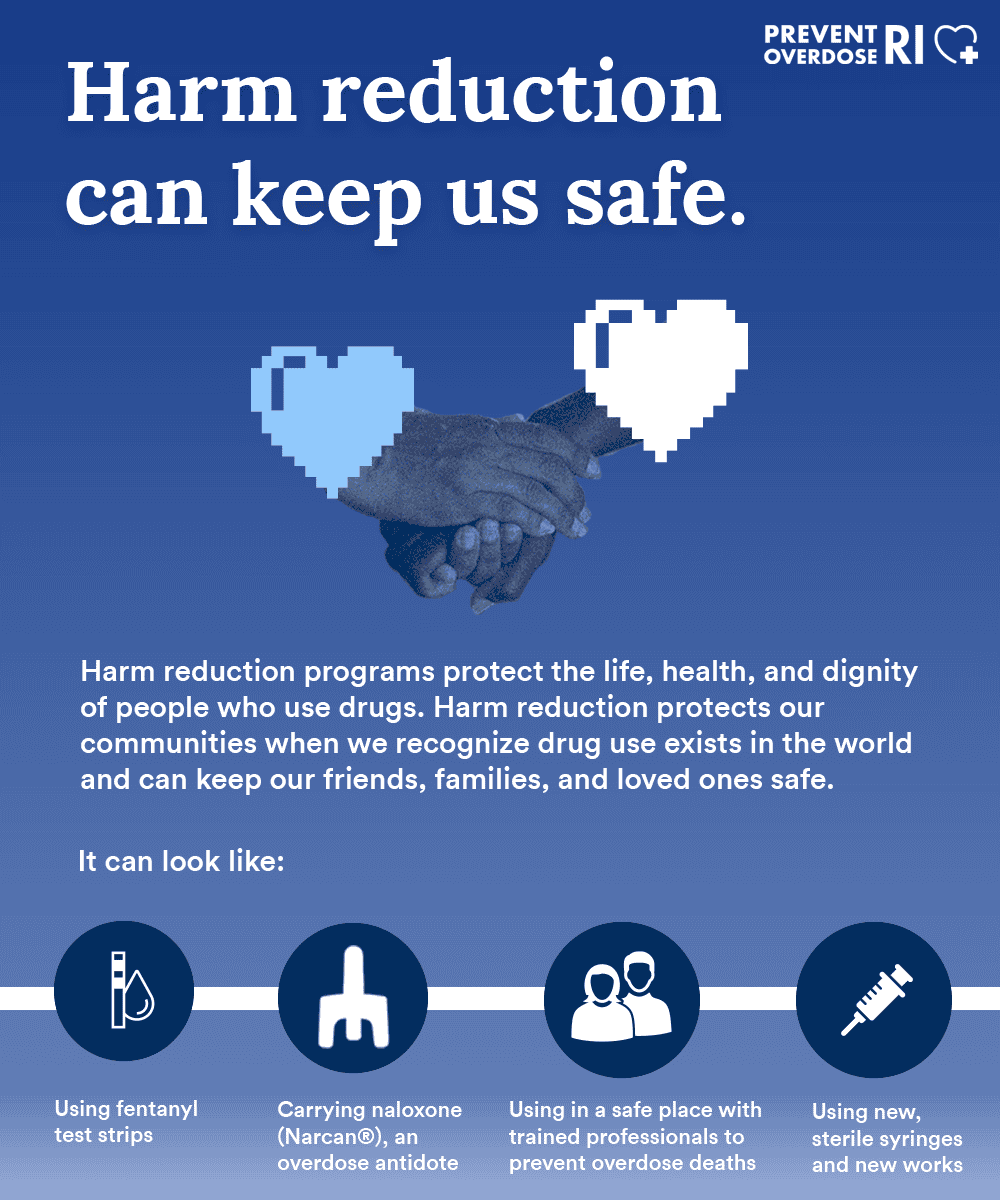
What does harm reduction look like?

What are overdose prevention centers?
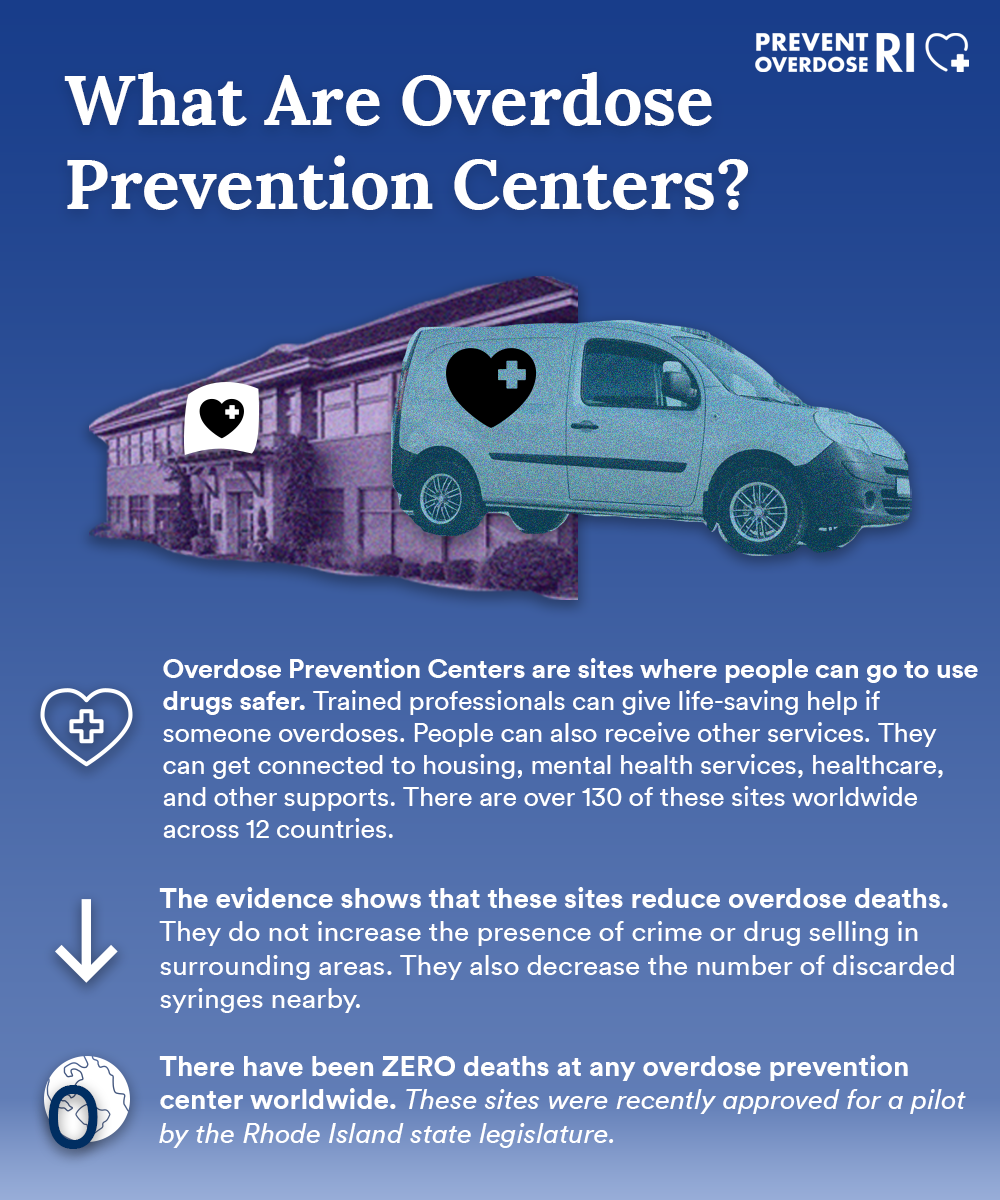
Harm reduction keeps people alive.
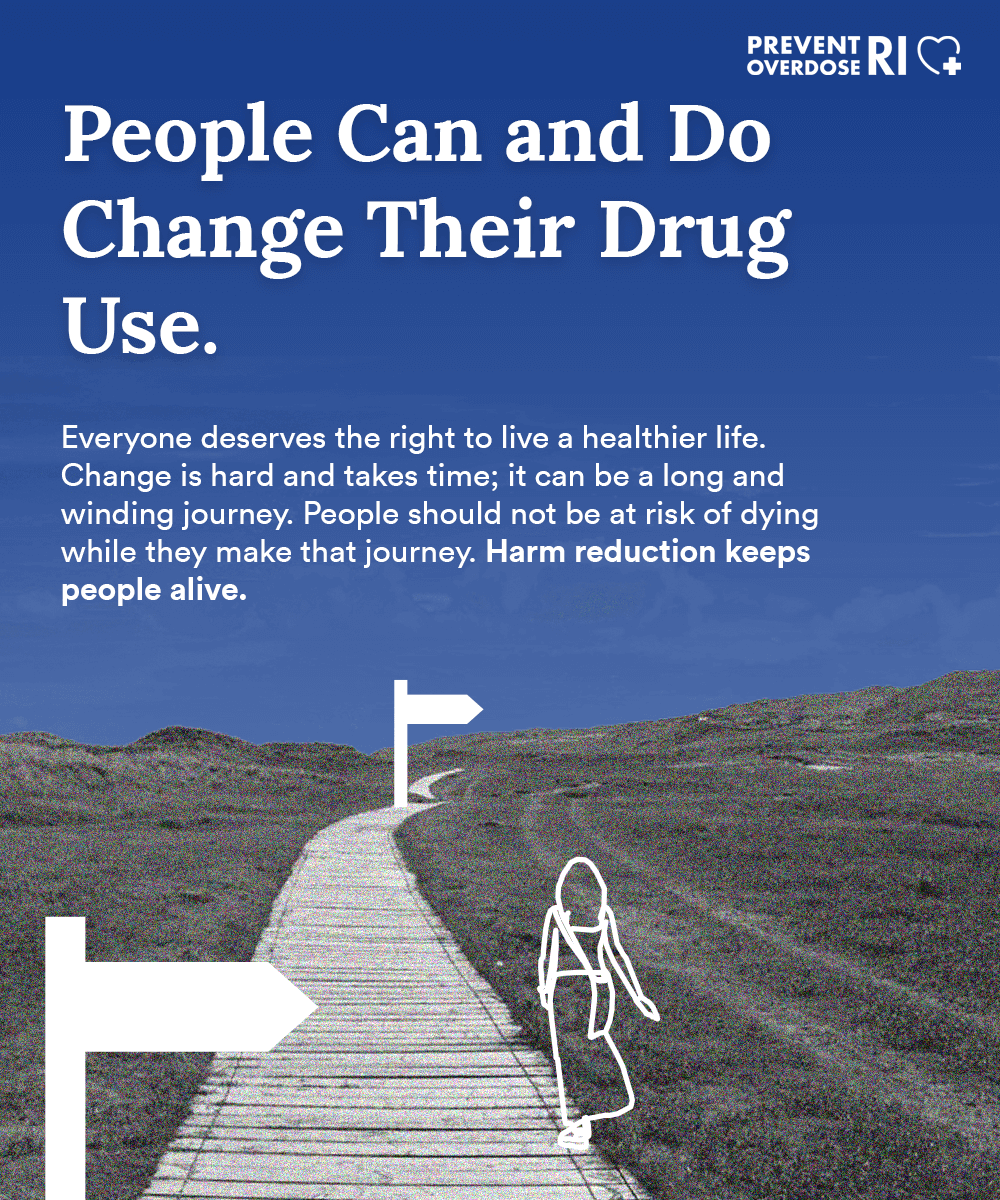
More Resources
Resources for safer drug use
In Rhode Island, you can already get supplies and services to stay safer when you use drugs. Find out where you can get syringes, naloxone, fentanyl test trips, and get tested for HIV and hepatitis C.
Safer drug use practices
Learning to take care of yourself takes time and thought. There are many that you can do to help you use drugs more safely. This includes resources in the community that you can access, as well as general suggestions to prevent overdose and infection.

